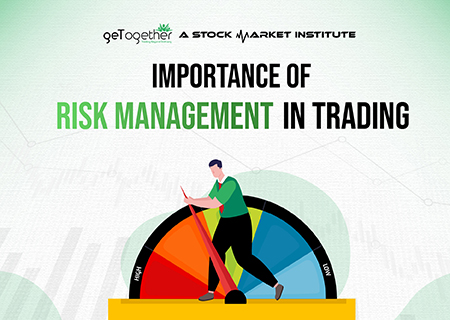Exploring the Growing Importance of Risk Management in Business Strategy
Exploring the Growing Importance of Risk Management in Business Strategy
Blog Article
Discovering the Significance of Risk Management for Effective Decision-Making Methods
In the elaborate world of organization, Risk Management becomes an essential consider the decision-making procedure. The ability to recognize prospective hazards and opportunities, and plan as necessary, can mean the distinction between success and failing. With devices such as SWOT and PESTEL, organizations are furnished to make informed choices, promoting strength and versatility in an ever-changing setting. Wondering how this works? Let's unbox the dynamics even more.
Recognizing the Concept of Risk Management
Risk Management, a vital part in decision-making, is often misinterpreted or oversimplified. Normally, it describes the identification, analysis, and prioritization of dangers to reduce, check, and control the likelihood or influence of unfortunate occasions. It's not merely about preventing adverse outcomes, but additionally regarding acknowledging prospective opportunities. Risk Management entails organized and regimented approaches, making use of data and informative analyses. It calls for a thorough understanding of the company's context, goals, and the potential risks that can thwart them. From economic unpredictabilities, legal responsibilities, calculated Management errors, to accidents and all-natural catastrophes, it addresses numerous dangers. Importantly, reliable Risk Management is not stationary; it's a continuous, progressive procedure that develops with transforming circumstances.
The Duty of Risk Management in Decision-Making Processes
In the realm of tactical planning and business operations, Risk Management plays an integral role in decision-making procedures. Risk Management therefore comes to be an essential device in decision-making, assisting leaders to make informed choices based on a thorough understanding of the threats entailed. Risk Management offers as a crucial component in the decision-making procedures of any kind of organization.

How Risk Management Improves Strategic Planning
In the context of tactical preparation, Risk Management plays an essential role. Initiating with the recognition of prospective risks, it additionally includes the implementation of Risk reduction steps. The role of Risk Management is vibrant but not fixed, as it demands constant tracking and adjusting of methods.
Recognizing Possible Threats

Executing Risk Mitigation
Risk reduction approaches can range from Risk avoidance, Risk transfer, to run the risk of decrease. Each approach must be tailored to the specific Risk, considering its potential influence and the organization's Risk tolerance. Reliable Risk mitigation needs a deep understanding of the Risk landscape and the possible impact of each Risk.
Monitoring and Readjusting Strategies
Though Risk mitigation is a critical action in critical planning, constant monitoring and modification of these methods is equally crucial. This ongoing process permits organizations to determine brand-new risks and reassess existing ones, making certain the carried out strategies stay reliable in the ever-changing business atmosphere. It additionally provides a chance to review the success of the Risk Management measures, enabling changes to be made where necessary, additional boosting critical planning. Effective tracking and change need using analytics and crucial performance indications (KPIs) to gauge performance. These tools supply beneficial data-driven understandings that can notify critical decision-making. As a result, tracking and readjusting Risk Management methods is a crucial element for enhancing a company's resilience and strategic preparation.
Instance Researches: Successful Risk Management and Decision-Making
On the planet of organization and money, effective Risk Management and decision-making typically serve as the columns of thriving enterprises. One such entity is a multinational oil firm that alleviated financial loss by hedging versus changing oil costs. In one more circumstances, a technology start-up flourished by identifying and accepting risky, high-reward strategies in a volatile market. A worldwide bank, confronted with regulative uncertainties, successfully navigated the scenario through aggressive Risk analysis and vibrant decision-making. These cases highlight the value of astute Risk Management in decision-making processes. It is not the absence of Risk, however the Management of it, that typically differentiates successful firms from not successful ones. These situations highlight the important duty of Risk Management in tactical decision-making. importance of risk management.
Tools and Techniques for Reliable Risk Management
Browsing the complex maze of Risk Management requires the ideal collection of methods and devices. These tools, such as Risk registers and warm maps, aid in determining and analyzing potential dangers. Techniques consist of both measurable techniques, like level of sensitivity analysis, and qualitative approaches, such as SWOT analysis. These assistance in focusing on dangers based on their possible impact and probability. Risk feedback approaches, a key element of Risk Management, entail accepting, avoiding, transferring, or mitigating threats. Tracking and controlling risks, via regular audits and evaluations, guarantee useful source that the methods stay efficient. With these tools and strategies, decision-makers can browse the facility landscape of Risk Management, thereby facilitating informed and effective decision-making.
Future Fads in Risk Management and Decision-Making Methods
As we discover the vast landscape of Risk Management, it becomes obvious that the devices and techniques made use of today will continue to advance. The concept of Risk society, where every participant of an organization is aware pop over here and included in Risk Management, will certainly gain much more prestige. These fads herald an even more positive and comprehensive approach towards Risk Management and decision-making.
Final thought

Risk Management therefore becomes a vital device in decision-making, aiding leaders to make educated choices based on a comprehensive understanding of the threats included. Risk reduction methods can range from Risk evasion, Risk transfer, to take the chance of decrease (importance of risk management). Reliable Risk mitigation calls for a deep understanding of the Risk landscape and the possible effect of check my reference each Risk. Risk reaction strategies, a crucial component of Risk Management, entail accepting, avoiding, transferring, or mitigating threats. The idea of Risk culture, where every participant of an organization is aware and included in Risk Management, will gain more importance
Report this page